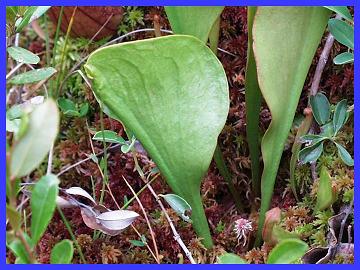

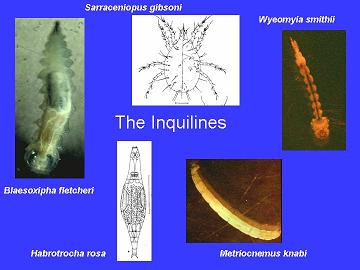
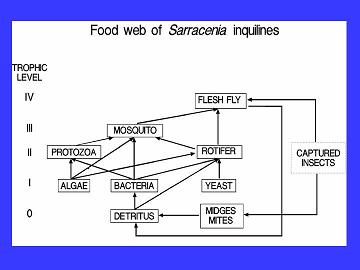
The assemblage of inquilines inhabiting water-filled leaves of the northern pitcher plant Sarracenia purpurea is a model system for studying food web assembly and community organization. In collaboration with Aaron Ellison (Harvard Forest), our laboratory is investigating such questions as: What are the effects of drought and disturbance on food web assembly? How does the inquiline community interact with the plant host via the transfer of critical nutrients from prey to inquilines to plant tissues? How does community assembly respond to nitrogen inputs from increased arthropod prey vs. increased anthropogenic inputs? Because each Sarracenia leaf supports a complete self-contained food web, this is an ideal system for small-scale manipulative field experiments.


Although Sarracenia has been studied mostly for its inquiline assemblage, the plant is an excellent system for long-term studies of demography and ecophysiology. Aaron Ellison and I have begun to explore the consequences of anthropogenic inputs of nitrogen from "acid rain" on the growth and population dynamics of Sarracenia. We have discovered that increased atmospheric nitrogen causes the plant to shift from the production of water-filled pitchers to flat phyllode leaves. This represents a rapid morphological shift from prey capture by pitchers to photosynthesis by phyllodes.
Effects at the individual plant level are amplified up through the population level. Using stage-based matrix models and individual-based simulations, we have explored the demographic consequences of increased nitrogen deposition on population growth rates. We have combined these models with long-term monitoring records on nitrogen deposition to forecast extinction risk under different scenarios of nitrogen deposition. These models are important tools for conservation biologists as anthropogenic nitrogen inputs are expected to increase greatly in the next century.
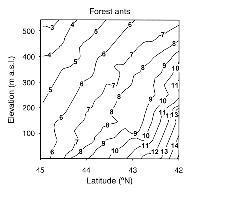
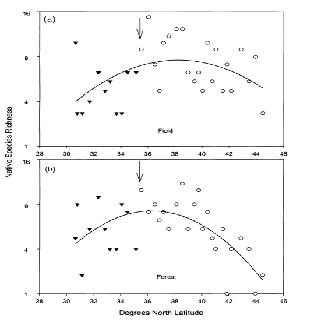
Ants are important omnivores in many terrestrial ecosystems, and are the most important prey taxa in the Sarracenia food web. We have been studying ant species diversity in New England bogs and forests and have documented distinct differences in community structure between these two habitats. Even within a narrow latitudinal span from Massachusetts to Vermont, ant species exhibit patterns of diversity and associations with environmental gradients that are also seen at global scales.
However, the presence of invasive species can often disrupt the "rules" of community assembly. For example, in eastern North America, native ant species richness peaks at mid-latitudes. The location of the peak corresponds to the northern range boundary of the invasive fire ant Solenopsis invicta. With Nate Sanders (Humboldt State University), we have also documented disruption of native ant faunas in California in response to the invasive Argentine ant, Linepithema humile. Finally, we are monitoring the recovery of native ant faunas in the Siskiyou Mountains of Oregon and California, in the wake of the catastrophic fires of the summer of 2002.
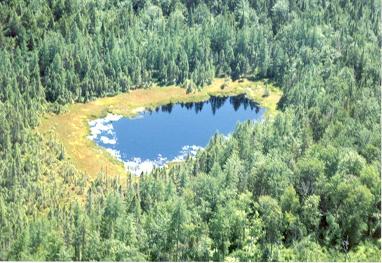
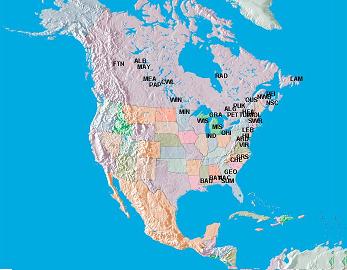
We have recently expanded our work beyond Sarracenia to consider the short- and long-term effects of nutrient loading on community structure and ecosystem processes in North American bogs and fens. Using a combination of manipulative field experiments and continental surveys, we are quantifying the effects of nutrient loading on the biodiversity of microbes, ants, rotifers, and plants. We hope to understand how microbial nutrient transformations and hydrologic regimes may mediate the effects of nutrient inputs. This is the first study to take a multi-trophic perspective on nutrient loading at a continental scale. Seed money for this study comes from a Vermont NSF/EPSCoR grant. Collaborators include Cully Hession (University of Vermont), Tom Lewis (University of Vermont), Donald Ross (University of Vermont), Klaus Nusslein (University of Massachusetts), Leszek Bledzki (Mt. Holyoke College), and J. Stephen Brewer (University of Mississippi).
In the future, we hope to undertake a systematic continental survey of the biodiversity and phyllogeography of arthropods, protozoa, and microbes associated with the Sarrraceniaceae (Sarracenia in North America and Heliamphora in South America). Collaborators include Aaron Ellison (Harvard Forest), Bill Bradshaw (University of Oregon), Tom Miller (Florida State University), and numerous other taxonomists and specialists.
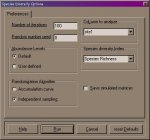
Null models represent statistical tests and Monte Carlo simulations of community structure in the absence of a particular ecological mechanism. They are essential tools for testing community patterns with non-experimental data. In collaboration with Gary Entsminger (Acquired Intelligence), we have built Ecosim, a public-domain application that allows you to analyze your own data with null models. With long-term support from NSF, we have built many modules for data analysis, and incorporated features such as a fully functional data editor, graphical user interface, and extensive html-based help system (with sample data files). EcoSim is a public-domain program for Windows, free to the scientific and educational community. EcoSim currently contains modules for the analysis of species diversity, niche overlap, body size overlap, species co-occurrence, macroecology, guild structure.
I am currently using null models and other statistical analyses to study patterns of nestedness, species co-occurrence, species importance, and biodiversity. Collaborators include Rob Colwell (University of Connecticut), Werner Ulrich (Nicolaus Copernicus University), Fernando Maestre (Carsten Rahbek (University of Copenhagen), Anne Chao (National Tsing Hua University), Gary Graves (Smithsonian Institution), Bob Dorazio (U.S. Geological Survey), and Thiago Rangel (University of Connecticut).